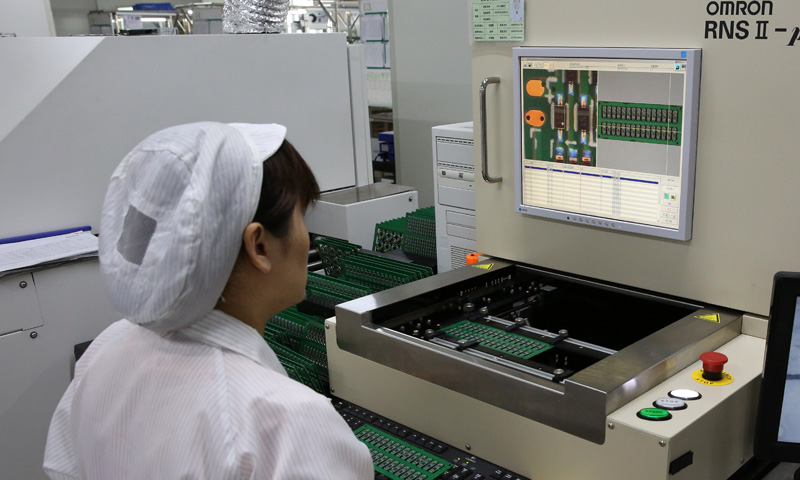Singapore has developed ultra-compact lasers using nano-semiconductor cylinders
[reported on September 13, 2018 on the website of Physics Organization] The Singapore Institute of Science and Technology (A*STAR) has developed a nano-semiconductor cylindrical array micro-laser. This is the first time that lasing is realized in non-metallic structures, and it is expected to produce micro-lasers for various optoelectronic devices.
Micro lasers are widely used in CD and DVD players. Today, optical engineers are developing nanolasers that are too small to be observed by the human eye. The fabrication of micro-structured arrays from high refractive index semiconductors has become a promising method for fabricating nano-lasers. The micro-semiconductor structure can act as a small antenna and resonate at a specific wavelength. However, making microcavities from micro-semiconductor structures is a challenge - microcavities are the heart of lasers, where light is reflected and amplified.
Now, the Singapore Institute of Science and Technology, Arseniy Kuznetsov, Son Tung Ha, Ramn Paniagua-Domnguez and their colleagues at the A* STAR Institute of Materials Research and Engineering, overcome these problems by standing waves. Standing waves were initially predicted by quantum mechanics, and they were experimentally demonstrated in optics about a decade ago.
There is a factor of unexpected discovery in the present invention. "Initially, we planned to generate lasers based on the diffraction resonance in the array, but after making samples and testing, we found that the intense enhancement effect was different from what we expected," Kuznetsov said. When we went back for further simulation and analysis, we realized that we had created these special waves.
The validation was the result of a five-year team study. Kuznetsov pointed out that this is a race against time because other groups are also working to develop active nanoantennas. "Until now, lasing has not been achieved in nano-antenna structures," he said. "So this is a big step for the dielectric nanoantenna research team."
The new lasers are also superior to other types of micro lasers. First, the laser can easily control its narrow, clearly defined beam direction, which is often required in device applications. In addition, the laser is highly transparent due to the sparse distribution of nano-cylinders, which is beneficial for multi-layer devices containing other optical components.
The team is working hard to develop electrically excited lasers, rather than optically stimulated lasers as in this study, which will be a major step forward in achieving commercial nano-lasers.

